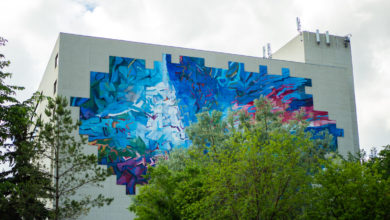 Manpreet Singh
Manpreet SinghClose your eyes.
Picture someone who’s homeless. Someone who doesn’t have enough to eat or access to healthy food.
Now open your eyes.
Was that person going to classes and labs, hanging out in the Students’ Union Building or the library, and participating in clubs and activities? Odds are when you think about someone who’s homeless, or food insecure, a university student isn’t the first person who comes to mind. But that doesn’t mean it’s not a problem on our campus, and in our community.
According to research done in 2018 by Dr. Eric Weissman, a researcher from the University of New Brunswick, an estimated 70,000 post-secondary students in Canada experience homelessness each year. For a comparison, the total number of undergraduate and graduate students at the University of Alberta is approximately 40,000.
To get a better understanding of what this issue looks like in Edmonton and at the University of Alberta, I spoke with different organizations and groups to break down what homelessness and food insecurity looks like around us, both on and off campus.
For students like me who spend a lot of their time on-campus, the experiences of the Edmonton community can sometimes seem like a whole different world. To get some wider context, I wanted to speak to someone in the wider community and get a better perspective on food insecurity in the city.
The Edmonton Food Bank (EFB) has been serving the Edmonton community since 1981. Carly Kincaid Williams, the special events and communications coordinator, said every month on average, the food bank supports 20,000 people.
That number, she added, has been increasing.
“[The number of people we help] grows, unfortunately, and it has a lot to do with the economy… when people lose their jobs, they need to come here,” she said.
Regarding the student population, the EFB supports a lot of families, she added, and so a breakdown of the specific number of youth (those up to 24 years old) they serve is hard to say.
“The food bank has a hamper program, which can serve both individuals and families. People can call the food bank, get set up with what their needs are, and be helped in the best way they can,” Kincaid Williams said. The hampers can be picked up at locations throughout the city, she added, which reduces any accessibility issues clients might have, and makes it more convenient.
The food bank also works with many different organizations, providing food for the people these organizations help, and allowing them to provide their own supports, Kincaid Williams added. They also have a program called Beyond Food, where other organizations help clients learn or develop skills, such as learning computer skills, resume building or getting their General Education Development certificate (GED).
“We work with those other organizations so that they do what they do best, and we don’t need to actually do those programs,” she said.
She described the partnerships with different organizations as a “tool,” adding that the programs of other organizations provide skills that will help clients get a step up.
“If we can help people and help them in a way that they may not have to use the food bank, or maybe not have to use it as often, that’s a huge thing,” she said.
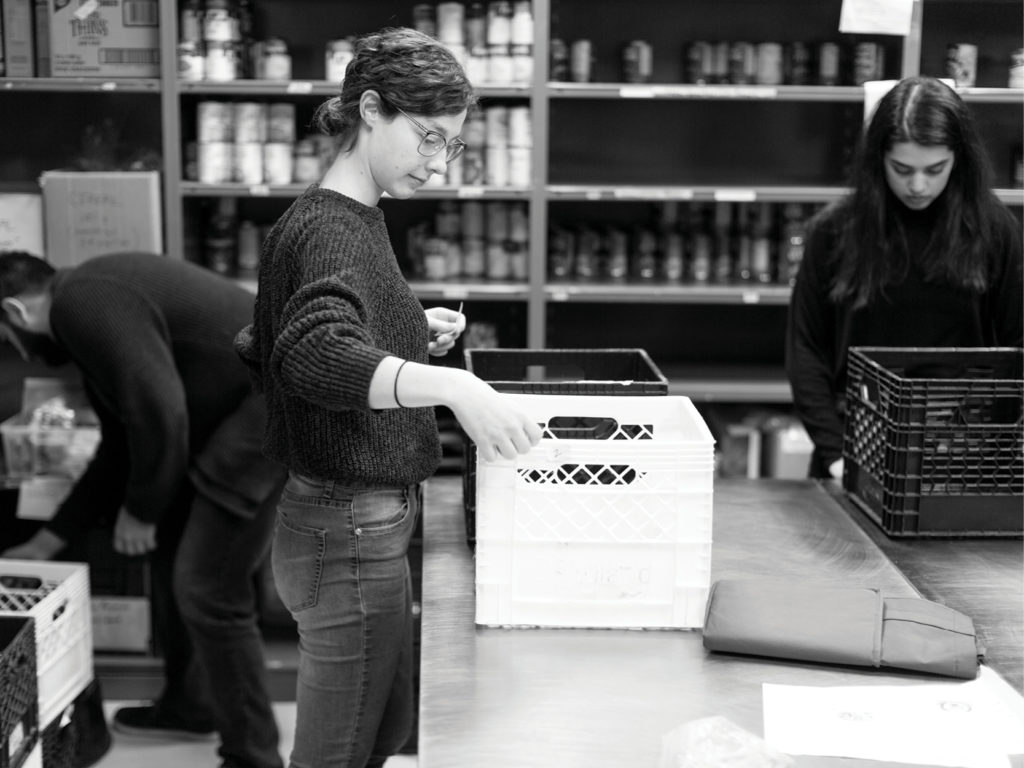
A lot of the reasons for food insecurity in Edmonton have to do with people losing their jobs, Kincaid Williams said, or not working as much. For youth, she added, it might be to do with struggles getting their first job or work enough hours. They also serve a lot of LGBTQ youth. It’s a “tough go,” she said, and some youth end up struggling and having to use the food bank.
However, happy stories come out of the food bank too. The EFB has a lot of people who come back and volunteer, or donate, once they don’t need the support anymore.
“[The stories help you to know] you’re doing it for the right reasons, and it helps people, so it’s wonderful,” she added.
As our interview wrapped up, I asked Kincaid Williams about what can be done in the broader community to raise awareness or reduce stigma. She brought up the shame sometimes thought to be associated with food bank usage. There’s no shame in using the food bank, she emphasised, because people don’t know if someone else you know has used it too.
“It could be anybody, because the people that use the food bank are just normal people,” she concluded.
It’s often said that the university is a city within a city, mostly because of its large population. There are also lots of campus-specific versions of services that exist in the community, such as the university health center and pharmacy. That also means our campus “city” experiences some of the same challenges the wider Edmonton community faces. When faced with student homelessness and food insecurity, different campus organizations are addressing the challenge.
One organization responding to campus food insecurity is the Campus Food Bank (CFB).
Madi Corry, the program manager of the Campus Food Bank, said in the 2018/19 academic year, the food bank served just over 2500 individuals and made just over 1500 hampers. The hamper program can be accessed by students, staff and alumni up to five years after they have graduated, as long as their OneCard is still valid. The program is supplemental, meant to cover some of the basics and reduce their overall grocery bill, Corry said.
There are no limits on the number of hampers each person is eligible for, Corry added, explaining that some students only use the program once in their entire degree, and some will continue using it to supplement throughout their degree.
“We recognize that students are engaging in capacity building just by being in school, so hopefully in the future they may not ever need another food bank,” she said. “We don’t have any limits,” she added. “If you’re in need of the support, and you’re part of our community, we can help you.”
“The people that use the food bank are just normal people.”
The CFB also runs no-cost cooking classes called Campus Kitchens, aimed at reducing isolation around cooking and eating and giving students more food knowledge. Grocery buses also run a few times per month, taking students to grocery stores away from campus that are less expensive, and also have more variety, allowing international students to eat something that reminds them of home.
Corry explained that it’s important to have a food bank on campus, mentioning that with the population of the University of Alberta, it’s like living in a small town, and being supported in the university community can mean a lot to students.
“Students might be more comfortable accessing them because they’re in their safe space,” she said, “especially students who aren’t as familiar with Edmonton and just know campus.”
I asked Corry why food insecurity is a problem on university campuses, and she talked about the stressors present in the life of a university student, such as paying tuition, rent, and other costs. Students are also in a precarious situation because of constantly working on school work and maybe not having the time for a job, she said. For people who are also supporting a family, Corry added, there is the challenge of balancing the costs of school and family life.
When asked about ways to decrease food bank usage, Corry explained they would like as many people accessing the food bank as need it, because students are in a “transitory state of capacity building.” She added that while it can be concerning to hear that food bank usage is increasing, they do like to know people are accessing their service who need it.
Research on different Canadian campuses, Corry told me, shows that an estimated 20-40 per cent of students are food insecure. However, the food bank is not seeing those kinds of numbers translated into users.
“We’re not seeing that percentage with our 2500 individuals that we’re serving, that doesn’t equal to that percentage of our full campus populations, so we know there’s other people out there, we just haven’t managed to connect with them yet,” she said.
Awareness mostly comes from friends telling each other about the service, she added, as well as seeing their sign outside their location. However, she said, professors sharing in class can also reduce the stigma of food insecurity and get people talking about food insecurity.
“It can tell students in their class… that there’s a service available for them and also normalizes that we should be talking about when we’re not comfortable using food or don’t have access to food…so that people don’t feel like they need to be ashamed or hiding, or just living with the fact that they aren’t able to meet their food needs,” she said.
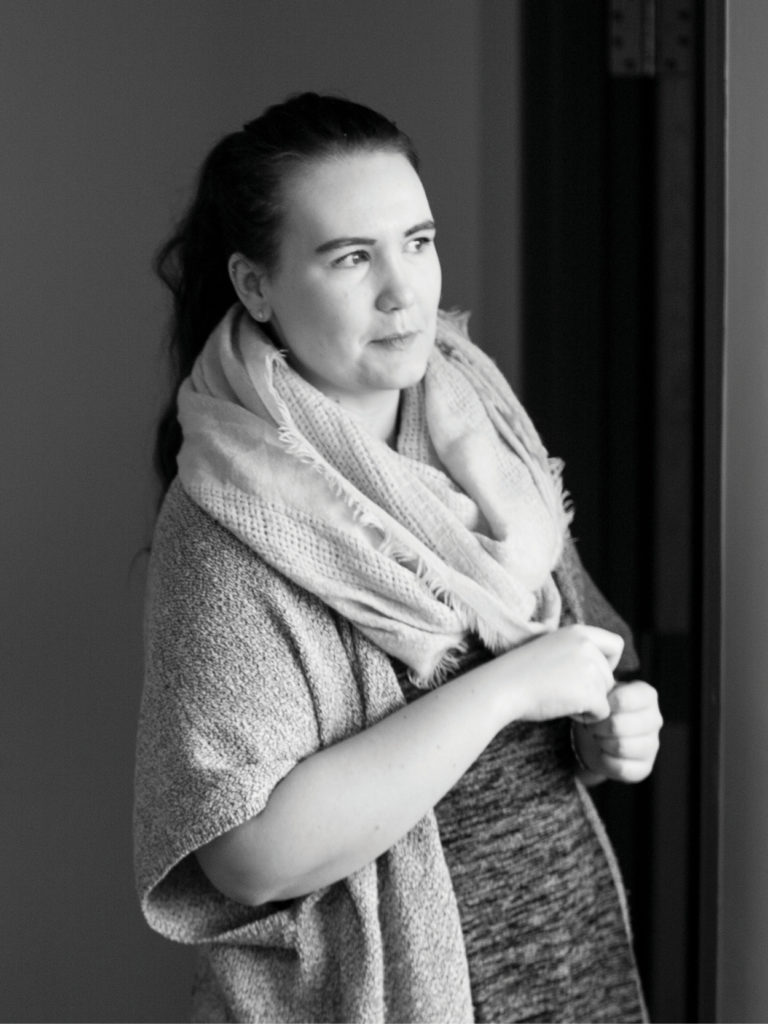
A few floors up from the CFB on the fifth floor of the Students’ Union Building is the Office of the Dean of Students (DoS), and through the glass doors is where I met Sarah Wolgemuth, assistant dean of students (student life), and Kevin Friese, assistant dean of students (health and wellness). They are co-chairs of a committee that looks at student homelessness.
Three years ago, when the committee was struck, they knew they were on the right track, Wolgemuth said, because different stakeholders and partners wanted to have the conversation about student homelessness.
“When you have a good idea, you know it’s a good idea because everybody is eager to get behind it,” she said. “Normally when you ask them to join a committee, they’re like ‘oh another committee,’ and this one was a group of pretty passionate people who were seeing similar things.”
In their jobs, Friese said, they regularly come into contact with individuals who are in “precarious” situations, such as not having a place to stay, facing food insecurity or financial issues. They were seeing a growing number of situations where these conditions were resulting in student homelessness.
“It can be a huge undertaking for somebody to have the courage to even step up and ask for assistance.”
The university has had a safehouse emergency housing program for ten years, but the service is based on short-term emergency use, usually up to two weeks, Wolgemuth told me. Friese added that for the past five years, they had been seeing between three and 25 students each year who needs some kind of short-term housing. But, they started seeing more students for different reasons where the two week emergency housing wasn’t enough to address their issue, and they needed more mid-range housing support.
When the committee started, Wolgemuth added, they didn’t have a lot of data, except for safehouse usage, and data of what some of the other service providers, such as the Campus Food Bank, were seeing. They thought about starting a survey to see what the problem of student homelessness on campus looked like, but ran into the issue of the varied definition of homelessness, she added.
They decided not to do a survey three years ago, but are now working with a researcher from the University of New Brunswick to develop a homelessness survey for the community. The anonymous data from the survey will also contribute to the creation of a national database on post-secondary homelessness, he added.
“[With this database] we can start to educate and learn more about this at a national level with other institutions and share and develop best practices together,” he said.
In fall 2018, the committee began piloting a medium-term housing option, Friese said, as well as making sure they had support for other forms of precarity, such as food security, financial needs, safety, and career support. Since the pilot started, he added, three students have used the program.
To qualify, individuals must be students, and experience a personal safety risk, Wolgemuth said. The categories of personal safety risk breakdown to domestic violence, intolerable living conditions, such as a fire or flood where insurance isn’t covering a place to stay, or financial destitution. As a part of of intake, she added, part of a student’s responsibility is doing follow up with a social worker to address the issues that led them to need emergency housing.
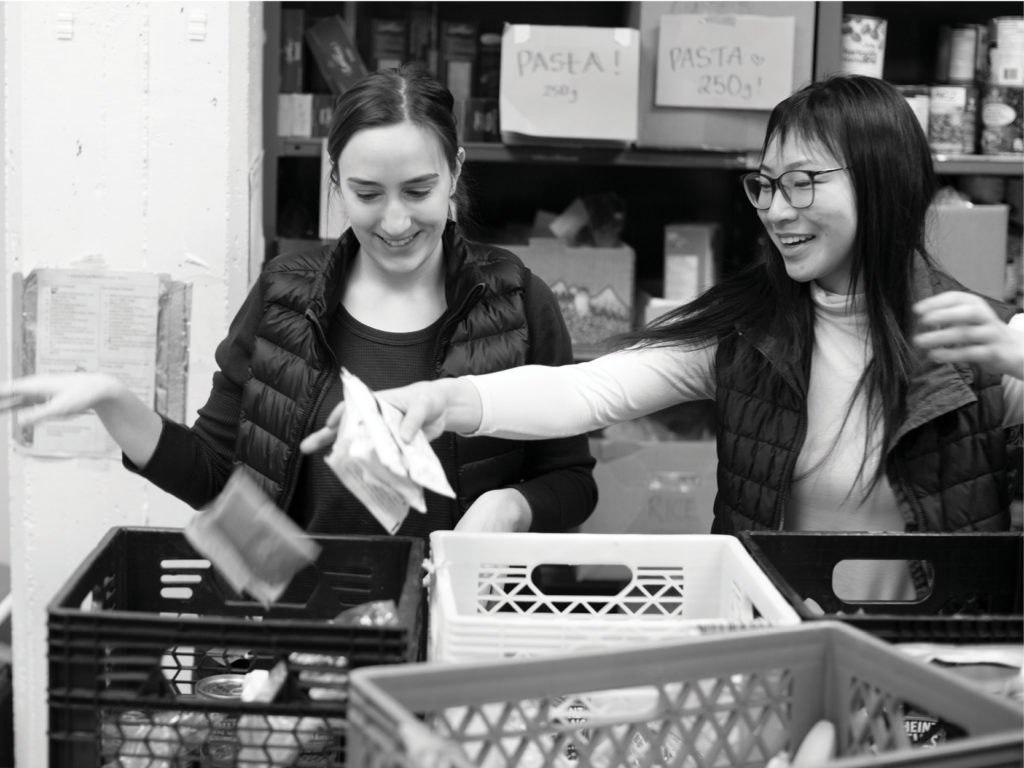
Wolgemuth and Friese also talked about hidden homelessness: people who don’t have a fixed address or their own place, who might be couch surfing, sleeping in their car, or living in a lab or office, for example. While students might feel safe and pretty resourceful sleeping on a friend’s couch, Wolgemuth pointed out that those situations can sometimes change suddenly, and students don’t always have a safety net.
“We’re here to support students, we know those sorts of changes, it’s impossible not to have an impact on your mental health and well-being, and therefore likely your academics,” she said. “So [we are] wanting to support students as holistically as we can.”
Wolgemuth shared an overheard conversation, where two students were discussing how long it would take for someone to notice if you were living on campus. If you were a graduate student with an office or a lab, you can shower in Van Vliet and get a locker on campus. What came out of the story was the shame or embarrassment associated with living on-campus or the need to hide it, Wolgemuth said.
As a society, we tend to look down on homeless people, Friese said, and the media doesn’t usually portray them in a positive light. There’s a stigma attached to identifying, and because of that, individuals think about how it will be received and judged, he added.
“It can be a huge undertaking for somebody to have the courage to even step up and ask for assistance,” he said.
Another issue is the concern of power differentials, he added. For example, international students might be afraid to identify as homeless, or in a precarious situation. They’re afraid they would get in trouble, kicked out of school or have troubles with their visas, none of which would happen in reality, Friese said.
Overall, the approach of the committee is holistic, using different campus partners to solve the housing aspect, as well as other areas, such as finances, careers support or food security.
“I think society as a whole is coming to the realization that homelessness isn’t just about housing, it’s not just about getting someone shelter. That we have to recognize that physical wellbeing, safety, mental health, all go hand in hand and that there’s a series of factors,” Friese said.
“In our city within a city, having resources to support our friends, peers and co-workers can mean a lot to students.”
A group of U of A students are also working on addressing the issue of youth homelessness. Helping Hands for Homeless Youth (HHHY) is a student-led club started in 2014 that specifically addresses youth homelessness. Sidath Wijayasiri, president of HHHY, said there are groups on campus that serve the homeless population in general, but they are the only one that specifically deals with youth.
“We aren’t a very big student group, but we’re probably the only student group that deals directly with youth homelessness,” he said.
HHHY is made up of eight executives, as well as general members who help out at events. Their group mostly does fundraising events, such as samosa, chai and bake sales, in support of Youth Empowerment and Support Services (YESS), he explained.
YESS is an emergency shelter, as well as providing temporary housing and individual support for youth 15-24 years old. Their aim, as stated on their website, is “to walk beside traumatized youth as they heal through relationships.” They also work with partners to prevent and divert out homelessness.
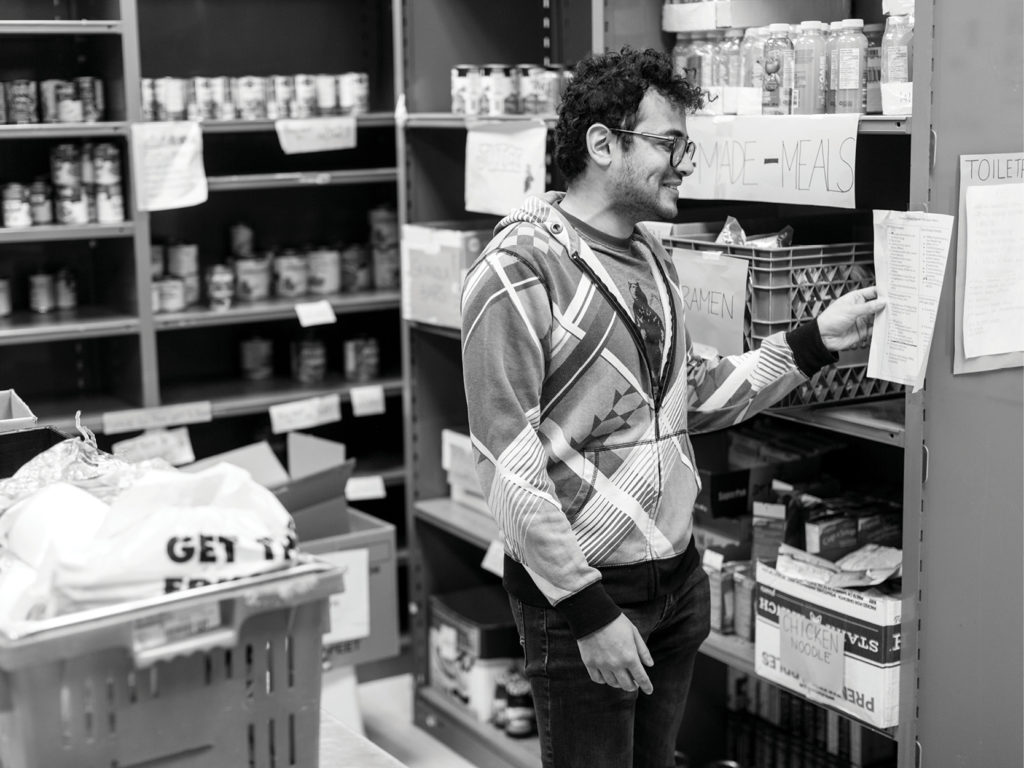
HHHY’s biggest annual event is the Street Store, Wijayasiri said. They collect clothing throughout the year, mostly from Lister Center and other residences, and in April, they display them in a store-like environment where youth from YESS and other youth organizations can choose clothes and get some toiletries.
Last year, the group also started volunteering with the Old Strathcona Youth Society, a youth resource center on Whyte Avenue. They volunteer in their collective kitchen, where they help prepare food served to youth on Saturdays. Homeless youth are a different group from adults experiencing homelessness, which has different causes, Wijayasiri said, and it’s important to address.
“A lot of these youth, since they’ve been exposed to a lot of hardship from a young age, it’s important that we tackle this problem and help them get back up on their feet before they start experiencing instability into later in adulthood,” he said.
He added that a lot of people seem to view youth as a burden, and that we have a bad image of youth. However, having worked with homeless youth, he said, some of them are “really nice.”
“People are afraid of youth, I’d say, more so than other groups of homeless people,” he added, “but having worked with them directly, I’ve gotten to build meaningful relationships with them, and they’re just like you and me.”
Looking back on the conversations I had, the one thing that seemed to come up consistently was stigma. Whether it was about identifying as being homeless, or the perception of homeless youth, or using the food bank, the judgement of others seems to be an important factor in how people respond to their situation.
Helping and supporting people that live in our community, especially on-campus, is an important way to make people feel like they are supported where they are. In our city within a city, having resources to support our friends, peers and co-workers can mean a lot to students.
Homelessness or food insecurity are issues that impact students from diverse backgrounds and for various reasons. Odds are most of us know someone who has had one of these experiences or is currently facing these challenges. Addressing these issues on campus starts with being a safe-space for friends to reach out and open up about their situation.
I thought Kevin Friese summed it up well.“I hope that [students] recognize that it’s not up to an individual to go in alone. We as a community are here to support each other, and the best thing we can do is check in with each other and ask if someone needs assistance and help, and to approach that from a place of compassion and not being judgemental.”




